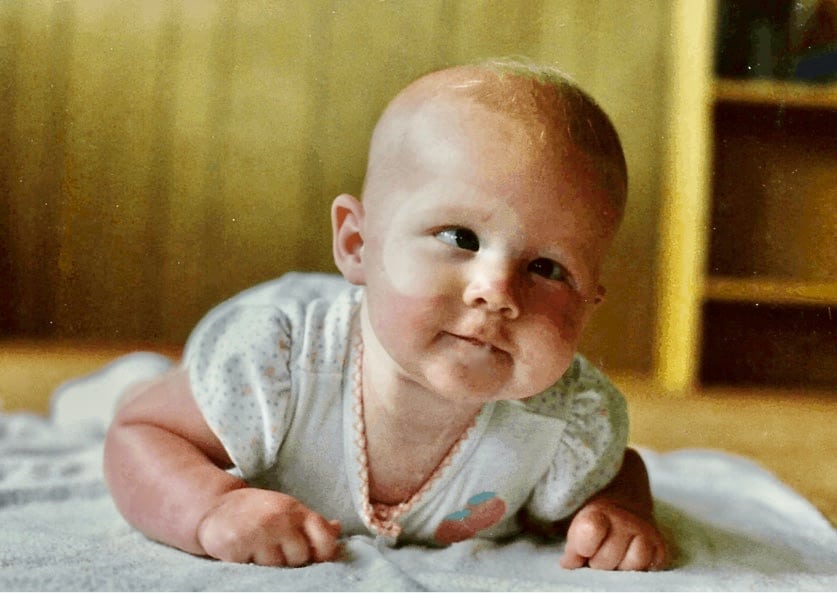“Is it possible to fix my lazy eye with vision therapy???” That is the big ticket question that I get asked constantly! Most people mistake the term “lazy eye” for strabismus. Strabismus is a general term for an eye turn, but within that diagnosis the specifics vary from person to person. I dove deep and researched each facet of strabismus and how vision therapy can help (or not) and here is what I’ve found.
Can Vision Therapy Fix Strabismus? Yes! Intermittant strabismus and lower angle strabismus are much easier to fix with a very high success rate (80%). Constant eye turns and large angles (greater than 15-20 diopters) generally require more time, determination and sometimes surgery. Even though strabismus can’t always be “cured” visual performance can drastically be improved for any patient, regardless of age!
Because the results and process vary greatly depending on the type of strabismus that is present, I am going to take you through each diagnosis and talk about the efficacy of vision therapy.
If you’d like to discuss this with me, one-on-one over zoom, head over to my calendar and schedule meeting. I will help you understand your (or your child’s) diagnosis and teach you about the different options that you have without the bias of a doctor. Just click the link below to head over to my calendar, otherwise, read on and be enlightened.
Schedule AppointmentDisclaimer: I am not a doctor, I am just sharing information.
Basic Definitions
Let’s go through the basic definitions so that we are all on the same page. Let it be known that with strabismus there are always exceptions to every “usually” so nothing is guaranteed. Every case is different, these are just general ideas.
Exo– This prefix means that one eye (or both) is going out. Usually occurs because of eye coordination issues.
Eso-This prefix means that one eye (or both) is going in. Usually occurs because of accommodation or focusing issues.
Intermittent- Sometimes the eyes are straight, sometimes not. When both eyes are straight sometimes, there is usually some binocular vision which makes vision therapy much more possible, without the need for surgery.
Constant- The eyes are never aligned and one eye is always either crossing in or pointing out. These are more severe and usually require both vision therapy and surgery if the angle is greater than 15-20 diopters.
Alternating- The turn switches from the left eye to the right eye. If you alternate between using your left eye to using the right, that is wonderful news! That means you probably have normal retinal correspondence (both eyes have the right center, essentially). If you’ve heard of the amazing Sue Barry (Stereo Sue) this is how her eyes worked. So even though she was older and had esotropia, her brain was able to figure it out.
In general, alternating and intermittent, low angle (less than 15 diopters) exotropias on younger kids are the easiest to fix, while constant, large angle esotropias on older people are going to be the hardest.
I’m not going into detail about amblyopia, but because amblyopia usually goes hand in hand with strabismus I will mention that vision therapy can definitely improve acuity in an amblyopic eye. It is easier for younger children, but is totally possible for adults.
Of course, every case is different and there are always exceptions!
As you look for your diagnosis below, make sure that you look for the diagnosis you were first given, not how you appear after eye muscle surgery. For example, if you were born with crossed eyes, your success will follow the patterns of those with infantile esotropia, even if you now have exotropia.
Phorias – Easily Treatable with Vision Therapy (Easy is Relative)
A phoria is not strabismus, but it is sometimes confused for strabismus because there are some similarities.
It is similar in that the eye is moving in, out, up, or down but the turn is more temporary and is usually not noticed except for during a vision exam when the doctor breaks the fusion between the eyes. A small phoria is very common and not usually noticeable to the casual observer.

Mild Exophoria 
Mild Esophoria
Phorias can turn into tropias and I feel like there is a lot of gray area between the two diagnosis so I’m covering both for good measure.
Phorias are treated extremely successfully with vision therapy. Surgery should never be considered in these cases. The severity varies and treatment times depend heavily on whether the patient does home activities, but usually for a phoria, you are looking at 16-32 vision therapy appointments.
Exophoria
There are plenty of scientific explanations for exophoria, but in simple terms, the eyes are just never quite pointing in the right place in space when they are relaxed. If you’re looking at a book at 2 feet, the eyes maybe be focusing or converging just behind the book at 2.5ft which makes the words in the book double, this is related to convergence insufficiency.
When looking in the distance, the same thing can occur where the focus point is further than the actual object you’re looking at, this is divergence excess.
Either way, the eyes just aren’t quite looking at the right place and they are just too far apart so the brain is constantly trying to compensate for the position difference. This causes lots of yuckiness like double or blurry vision and headaches.
Vision therapy is amazing at treating this and surgery is almost never required. Exercises like Brock String and vectographs are super helpful in teaching the eyes to coordinate more effectively at different distances. Strengthening muscles adds control.
Esophoria
This is just the opposite of exophoria, the eyes have a natural resting position that is slightly in. This means the eyes are constantly fighting against the resting position to create clear images. By resting position, I’m referring to where the eyes sit when the fusion between the eyes is broken by the doctor. The eye doesn’t turn in consistently.
Many times this is linked to problems with being able to focus the eyes, accommodation. When a lot of effort is required to focus, especially at near, it makes it very difficult to keep the eyes straight.
When the brain is successful and keeps the image clear and single, it’s accompanied by headache, fatigue, and poor concentration. Other times the Esophoria causes double or blurred vision.
This is another condition that is extremely successfully treated with vision therapy. The treatment will likely include glasses that help reduce the strain that focusing so hard creates. It will also include exercises that help build fusion and help the brain’s ability to focus at different distances improve.
Intermittent Tropias- Usually Treatable with Vision Therapy. Rarely, Surgery will be Required
If one or both eyes goes visibly in or out sometimes, but they are straight most of the time, it is referred to as an intermittent esotropia, exotropia or hyper/hypotropia.
It is similar to a phoria because the natural resting position of the eyes is not straight so the brain must over compensate to keep them straight.
Because this usually happens later on and isn’t present from birth, the brain has hopefully developed some binocular vision; the eyes can work together on some level.
There may be decreased depth perception, double vision and a host of other issues, but the brain CAN use both eyes which is fantastic news. The fact that the eyes are intermittently straight means that the brain wants to use both eyes and is trying, but it is struggling at combining the feedback from both eyes.
Vision Therapy is the perfect answer for these patients in many cases. Strengthening binocular vision and all the important eye muscles, including the focusing muscles will make it easier to keep the eyes aligned.
Vision Therapy has an 80% success rate with intermittent eye turns!
BUT sometimes with larger angle turns or for patients whose eye is turned 75% of the time vs 10% of the time, surgery might be beneficial and/or necessary.
Surgery can change the natural resting position of the eyes to become closer to straight which takes a lot of strain off the visual system.
Even after completing a rigorous vision therapy program, an intermittent eye turn can come back when the patient is tired. Vision therapy teaches the brain to use both eyes, but doesn’t guarantee straight eyes 100% of the time.
This can take a lot of time, plan on at least 9 months, but more like 18 months, but it is so worth it!
Accommodative Esotropia- Vision Therapy and Glasses Extremely Successful
Accommodative esotropia usually occurs because of an uncorrected farsightedness. The brain struggles to keep images clear by focusing extra which can cause the eye to turn inward.
This usually happens when the person is looking at something close up, but can happen in the distance too.
Many times, getting the correct glasses prescription will remove the strain and allow the eyes to focus correctly and stay straight. Sometimes the farsightedness even goes away with age!
If it is simply an accommodation problem, the combination of glasses and vision therapy is a fabulous fix. Once the eyes can see clearly and focus efficiently, the eye turn may go away for good.
Surgery is rarely required for this condition and should only be considered after a full course of vision therapy has been pursued.
Constant Exotropia or Esotropia
If you were born with an eye turn, move on to the next section, infantile esotropia. If you had strabismus develop later, after age 2, and it maybe even started as intermittent but then became a constant turn over time, there is good news and bad news.
The good news is that teaching the eyes to work together through vision therapy is likely going to be successful. If the eyes were straight in those formative early months/years, there are hopefully connections made and the brain is wired for 3D seeing, even if it isn’t using those avenues currently. The prognosis is good!
The bad news is that if the turn has become constant, your brain is probably suppressing one eye. That eye will need to be reawakened and retaught how to see which takes time and patience.
If the angle is large, more than 15-20 degrees, there is a chance that you may need strabismus surgery at some point on your vision therapy journey as well.
Usually, with constant strabismus, the pattern is to start with vision therapy for 6 months to one year. If progress is steady and results are coming, then vision therapy is continued until the final result is achieved. If progress slows or plateaus after that initial time, surgery is considered. After the surgery, vision therapy is continued to help teach the brain to use both eyes and keep them straight!
Some brains are ready to jump into using both eyes and are happy to keep the eyes straight, while others need a little surgical help. There is no way to know for sure until you jump in with both feet and find out.
Infantile Esotropia- Usually Requires Vision Therapy and Surgery
If an infant develops an inward eye turn, usually pretty severe, in the first few months of life it is referred to as Infantile Esotropia.

Because infantile esotropia is usually noted by a pediatrician, the family is most often referred to a pediatric ophthalmologist who recommends surgery as early as possible. Usually glasses and patching are attempted, but most cases require surgery, and many times multiple surgeries to get the eyes aligned.
Rarely, this combination of surgery and glasses can lead to binocular vision. Usually these kiddos either suppress one eye or have double vision. Often, the esotropia will switch to an exotropia after surgery and the eyes continue shifting throughout life, trying to find visual peace!
Surgeries can give results for a few months and even years sometimes, but the strabismus almost always returns over time.
For children with infantile esotropia, surgery is usually necessary, but combining it with vision therapy is an amazing way to get the results to last for a lifetime. Catching it early while the brain is still developing makes it all possible. If the brain can use the images from both eyes to make the world 3D, it will be much more motivated to keep the eyes straight.
Starting with a developmental optometrist, even though surgery will probably follow, is still important. They can try different techniques, even with babies, to see if binocular vision can be gained without surgery. If surgery is needed, they will know when to refer, and who to refer you to that will have a common goal of binocular vision. Then after surgery, vision therapy can be done to help seal the results.
For adults who were born with infantile esotropia things are a little different. Even if the eyes are currently pointing out after surgeries, the prognosis is still similar. Vision therapy can definitely improve vision, but surgery is required more often to get good alignement and good binocular vision.
This is what I have, and I’m sad to say that it is the worst case scenario. The good news is that I have improved my vision tremendously and gained some 3D vision so it is possible, but it is quite difficult.
Complicating Factors
- The eye turn is larger than 15-20 diopters
- Age- Bad visual habits have been formed and must be broken.
- Esotropia- Moving the eyes out, diverging, is harder, in general, for everyone which means that esotropia patients have a tougher time learning to straighten and use both eyes
- ARC- Anomalous Retinal Correspondence when the eyes aren’t using the same part of the retina to see together, this makes double vision more likely through the VT process and just makes it harder.
- Severe amblyopia or blindness in one eye.
- Victim Mentality and hopelessness
Helpful Factors
- The eye turn is less than 15-20 diopters
- Alternating- If the eyes alternate which one is focused from left to right, this is usually a good sign. ARC usually isn’t present in this case.
- Exotropia- It is easier to learn to bring the eyes in, converge, so vision therapy goes more smoothly for exotropia patients.
- A glasses prescription- there is more wiggle room in treatment options when 20/20 isn’t present in both eyes.
- Determination, positivity, and patience
Vision Therapy can absolutely still help treat infantile esotropia, no matter the complications. Even though I may not have perfect 3D and stereopsis after 2 years of therapy and one eye muscles surgery, I have had MAJOR improvements in daily life. I can easily drive at night now, I see amazing detail in so many objects around me, I have gained much better depth perception and expanded my peripheral vision.
Because I was born with a complicated case of strabismus, I will likely never have completely “normal” vision. But you can bet that I will keep pushing the limits and see how good I can get it!
While vision therapy can’t always guarantee perfect binocular vision with strabismus patients, it can guarantee visual improvements.
Will Vision Therapy Make My Eyes Straight?
As you were reading through you may have felt I wasn’t focusing on whether your eyes will become straight after completing vision therapy or not, that’s because that is not what the focus of vision therapy is.
Most people with strabismus are looking for a solution to make their eyes straight.
While vision therapy often results in straight eyes, straight eyes are not the end goal.
The goal of vision therapy is to teach the brain to use both eyes effectively together and to build excellent, efficient binocular vision. When the focus is on good binocular vision, straight eyes follow.
Do you see the difference?
Optometrists don’t make the eyes straight and then hope for good binocular vision. It’s the other way around. Good binocular vision will create a system with straight eyes.
But it is important to remember that a strabismus brain will always be a strabismus brain. When tired, or stressed, the eye is likely to still turn in/out intermittently. Vision therapy will train you and help you gain amazing eye control and awareness so that you can easily straighten and use your eyes together again, but the strabismus doesn’t usually go away completely unless intervention happens extremely early or it is a mild case.
For adults, maintenance will be required, even after you “graduate” from vision therapy.
To loose 100 lbs, extreme diet and exercise will be required. Once that end goal is achieved, a moderate diet and exercise will be required to maintain the progress. Going back to milkshakes and Netflix won’t maintain progress. After years, habits form and the maintenance will become second nature.
The same is true of vision therapy. Maintenance will be required in many cases, especially for adults. Let amazing vision become your new hobby and join me on a journey from strabismus to stereopsis!
Conclusion
Some people are born with brains that simply don’t know how or don’t want to use both eyes. Through vision therapy, and sometimes surgery, the brain can be taught. It takes work and time, but it is SO worth it.
Hopefully, you were able to gain a little more insight into which types of strabismus vision therapy is effective in helping. If you have more questions or want to talk about your specific case one-on-one with me, I offer consulting and/or coaching calls where I can walk you through the process and help you find clarity as you search for answers. I have been through it and find so much joy in helping others through the process.
I know it is so hard when you are being pulled in different directions by optometrists, pediatricians, ophthalmologist, friends and family. I am here to offer unbiased and detailed information to help you make your decision!
You can sign up below.
Schedule Appointment

